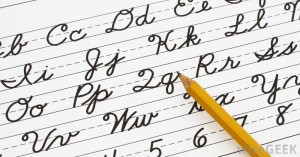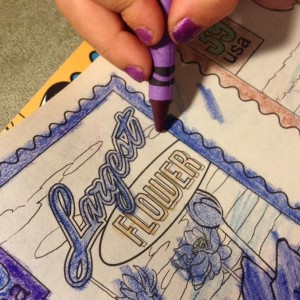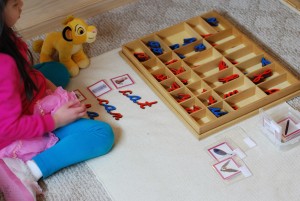 Composing an Idea
Composing an Idea
In an earlier article, I wrote about beginning a six week writing project with fourth graders in a local public school (also see Writing and Reading with Children, March 30, 2015).
It was a wonderful experience, and the children eventually wrote amazing stories. However, I found the first few weeks very frustrating. Why? Because none of the fourth graders knew how to write in cursive. They all printed their stories in a style formally known as Manuscript. When I visited elementary schools five or six years ago, children began the study of cursive writing in second grade, and by fourth grade they were experts. The writing process had become automatic, so that when they wrote they could concentrate on generating ideas, sensory details, emotions, visual images.
I write a lot. Sometimes I write on my laptop. But when it really matters, when I’m trying to tell a story, identify my feelings, write to a friend, I get out my notebook and write with a pen. My handwriting isn’t textbook perfect (in fact it took a nosedive when I was in high school and began to mimic the left handed backhand of a boy I was smitten with) but it all links together. I can generate ideas quickly, and I can read what I write.
But could I do that if I was printing? Try it. Each letter stands completely alone. You begin one letter, execute and finish it, which may require you to pick up your pen several times, then you pick up your pen again to start the next letter. I felt sorry for the fourth graders. Their hands were wearing out the very first day, and they were concentrating so hard to get the words down, they weren’t thinking very much about anything but the bare bones of the story.
Does Learning Handwriting Matter?
Ask just about anyone under forty and the answer is “no.”
Ask an elementary school teacher and you’re likely to hear “good riddance!”
Even those of us who learned the Palmer Method of Cursive Writing in school are likely to remember all those hours of writing repetitious loops and curved lines and wonder just how valuable an exercise it really was.
The Common Core Standards released in 2010 call for teaching legible handwriting (manuscript printing) in kindergarten and first grade, but after that shifts to teaching proficiency on a keyboard. Cursive writing is not required or assessed, although individual schools, school districts, and states may supplement the curriculum with cursive instruction if they wish. Some states have kept cursive in the curriculum, and many private schools still include it. But given the emphasis on testing Common Core skills in public schools, children enrolling in 2015 may never see a handwriting chart or practice a loop or curve. They will more than likely grow up unable to read their grandparents’ love letters or historical documents in the original. Cursive shows up in a wide variety of places — billboards, coloring books, textbooks, films — will graphic artists now start eliminating these fonts from their work?
It makes me sad that children are not being taught to write cursive, but does it really matter?
Handwriting Supports Cognitive Development
Psychologists and learning theorists say yes, it does matter. According to a 2012 report by Hanover Research, evidence-based research has shown that teaching cursive writing to children benefits their motor skills and cognitive development, boosts academic achievement, and aids children with learning disabilities. Developing handwriting skills increases brain activation, provides a foundation for higher-order skills, and impacts performance across all academic subjects.
Neuroscientist Stanislas Dehaene studied students who read and wrote in Chinese and French cursive. He explained that “When we write, a unique neural circuit is automatically activated.” He commented that children with dyslexia and other learning difficulties are often helped by drawing letters in the air. “There is a core recognition of gesture in the written word,” he observed. “A sort of recognition by mental stimulation in your brain. . . .And it seems that this circuit is contributing in unique ways we didn’t realize. Learning is made easier.”
Other psychologists have reported that students learn better when they take notes by hand than when they type on a keyboard. According to Mueller and Oppenheimer, cited in What’s Lost as Handwriting Fades, New York Times, June 2, 2014, writing by hand allows students to process the content of the lecture as they reframe it in their own words. Analysis of student notes showed that laptop-notetakers tended to transcribe most of the speaker’s words verbatim while those who took notes by hand had to process information as well as write it down. That initial selectivity and prioritization lead to long-term comprehension.
Perhaps most significant of all, Psychologist Virginia Berninger demonstrated that when children composed text by hand using cursive writing, they produced more words and more ideas than when they typed on a keyboard. By combining brain imaging with observation of several different writing tasks, Dr. Berninger also noticed that children with better handwriting exhibited greater neural activities in areas associated with working memory, as well as increased activation in the reading and writing networks.
Teaching Handwriting at Home
I asked the classroom teacher what would happen if a child came to school knowing how to write cursive. She said that was fine. Since she’s not obliged to teach or assess cursive, it becomes simply a tool that the child is welcome to use or not. My friend Arlene, who works in her grandson’s class several days a week, said that’s how his school is handling the whole issue — the kids can learn cursive or not: it’s their choice. But any published method of cursive instruction (the Palmer Method, Spencerian, and Peterson are the most popular) requires formal and structured instruction — children are unlikely to learn it on their own, or volunteer for extra lessons if they don’t have to.
However, there’s an app for that. I kid you not. Type “cursive writing” into your iPhone or tablet and you will quickly see a screen full of applications designed to help children learn to read and write a variety of cursive styles. I’ve been following a publishing company called Handwriting Without Tears for some years. They market a progressive series of books and related activities for teachers and parents to use. They recently added digital teaching tools, YouTube videos, and online worksheets to their offerings. Another company, Yes, You Can Teach Cursive, has developed materials for teaching the Peterson method utilizing a digital tablet.
My children learned cursive as they learned to read, using a Movable Alphabet at their Montessori School, which is now available at Amazon. Dr Montessori began with cursive writing because it was the script that adults communicated with in the Italy of her time. It had not yet become customary to teach children manuscript printing, which was used primarily by draftsmen and the printing industry.
Montessori didn’t believe in drills or worksheets, just learning to write and to read.
“Must one begin with strokes? The logical answer is “No.” These require too much effort on the part of the child to make them. If he is to begin with the stroke, it should be the easiest thing to execute. But, if we note carefully, a straight stroke is the most difficult to make. Only an accomplished writer can fill out a page with regular strokes, whereas a person who is only moderately proficient can cover a page with presentable writing.” (Dr. Maria Montessori, ‘The Discovery of the Child’, Ballantine Books, p. 192)
So there you have it. The schools may be giving up on instruction in cursive, but we don’t have to. And I certainly plan to give my granddaughter plenty of opportunity to learn to read cursive, write cursive, and compose in cursive. In the end, of course, it will be her decision whether to use what I teach her, but at least she will have a choice.
Next week: Ideas for building relationships with grandchildren when they live far away.
Share this post





